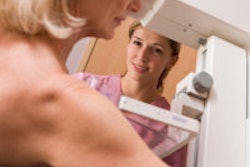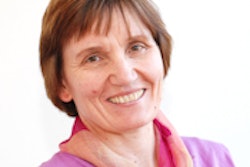Dear AuntMinnie Member,
Women who are told they have dense breast tissue aren't getting follow-up imaging exams that could better detect breast cancer, according to a study presented at this week's American Institute of Ultrasound in Medicine (AIUM) meeting in Las Vegas.
The research, led by noted breast imager Dr. Stamatia Destounis, could spell bad news for the burgeoning breast density awareness movement, which is predicated on the assumption that women with dense breast tissue will seek out imaging alternatives to x-ray-based mammography if they are informed of their status.
Dr. Destounis and colleagues reviewed the cases of nearly 40,000 women at Elizabeth Wende Breast Care in New York state who were told they had either extremely dense or heterogeneously dense tissue. Both categories of breast tissue are considered to be dense, and the women were informed of their status as per New York law.
But only 2% followed up on the notification by returning for a screening ultrasound exam, Dr. Destounis and colleagues told AIUM attendees. Read more about the study by clicking here, or visit our Ultrasound Digital Community at ultrasound.auntminnie.com.
JAMA article stirs the mammography pot
Breast screening is dominating the headlines this week, thanks to a new article in the Journal of the American Medical Association. The paper tried to add clarity to the debate over the benefits and risks of mammography, but it may have ended up further confusing the situation.
Researchers from Boston reviewed the major research studies that have been performed on mammography, with the goal of presenting simple data to women on the risks and benefits of breast screening. They determined that screening mammography reduces mortality by 19% overall in those who have the exam, but women have a 61% of getting a false positive and a 19% risk of overdiagnosis.
The authors' intention was to point out that the benefits of mammography can vary based on individual risk factors, and this could indicate a need for more personalized screening decisions. But media coverage ignored the study's nuanced message, and instead focused on a side note the researchers made about mammography's benefits being "overstated."
Read more about the study by clicking here, or visit our Women's Imaging Digital Community at women.auntminnie.com.
Jobs for nuclear medicine residents
Finally, we close with part 2 of our series on job prospects for nuclear medicine residents, who are encountering an intimidating job market due to their unfamiliarity with reading radiology images.
While many nuclear medicine graduates are finding jobs scarce, others are taking steps to improve their marketability. Read more by clicking here, or visit our Molecular Imaging Digital Community at molecular.auntminnie.com.



















